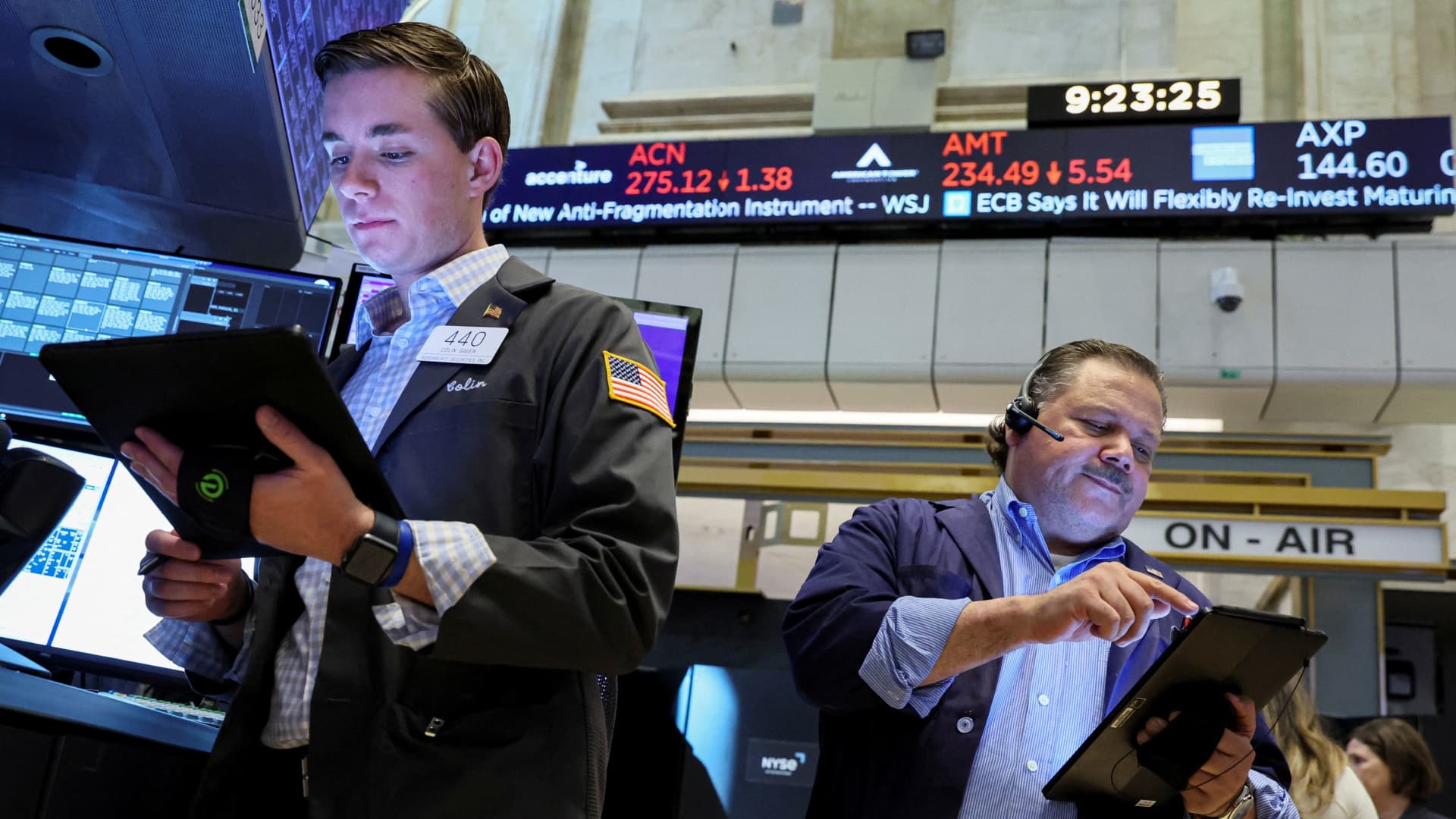Products You May Like
U.S. stock futures fell Thursday night after the S&P 500 closed out its worst first-half performance in decades.
Futures tied to the Dow Jones Industrial Average traded 114 points lower, or 0.4%. S&P 500 and Nasdaq 100 futures dipped 0.3% each.
Micron Technology shares fell more than 2% in after-hours trading on the back of disappointing fiscal fourth-quarter guidance.
Thursday marked the end of the second quarter and the first half of the year. For the quarter, the S&P 500 fell more than 16% — its biggest one-quarter fall since March 2020. For the first half, the broader market index dropped 20.6% for its largest first-half decline since 1970. It also tumbled into bear market territory, down more than 21% from a record high set early January.
The Dow Jones Industrial Average and Nasdaq Composite were not spared from the onslaught. The 30-stock Dow lost 11.3% in the second quarter, putting it down more than 15% for 2022. The Nasdaq, meanwhile, suffered its biggest quarterly drop since 2008, losing 22.4%. Those losses pushed the tech-heavy composite deep into bear market territory, down nearly 32% from an all-time high set in November. It’s also down 29.5% year to date.
Those steep first-half and quarterly losses come as investors grapple with sky-high inflation and tighter monetary policy. The core personal consumption expenditures index – the Federal Reserve’s preferred inflation gauge, rose 4.7% last month on a year-over-year basis. While that was slightly below a Dow Jones estimate, it was still near multidecade highs.
The Fed, in turn, has stepped up its efforts against the surge in prices, hiking by 0.75 percentage point in June. That was its biggest rate increase since 1994.
Both of these factors have resulted in escalating recession worries. First-quarter GDP contracted by 1.6%, and the Atlanta Federal Reserve’s GDPNow tracker is pointing to another 1% decline in economic output for the second quarter.
“If we have any words of comfort, it is that universal losses at this pace rarely take place in successive quarters, but this is not the same as saying that further losses should not be anticipated,” wrote Michael Shaoul of Marketfield Asset Management. “This still very much looks to be the middle of the story, the period in which a previously ‘pacific’ outlook is replaced by something far stormier, and we are yet to see any signs that the weather is about to turn for the better.”
Traders will take in more economic data Friday, with the latest ISM manufacturing index and construction spending numbers set for release at 10 a.m. ET.
Subscribe to CNBC PRO for exclusive insights and analysis, and live business day programming from around the world.
